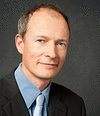You are here
KI-Net Conference Announcement
Seminar by Eric Sonnendrueker: Geometric electromagnetic PIC modelsNov 7, 2017ICES, UT-Austin |
ABSTRACTA hamiltonian framework for the derivation of semi-discrete (continuous in time) Finite Element Particle In Cell approximations of the VlasovMaxwell equations was derived in [1]. It is based on a particle (Klimontovitch) discretization of the distribution function and a compatible Finite Element discretization of the grid quantities. The ideas introduced in [1] can be declined in different variants, choosing different discrete spaces for the fields or adding smoothing functions for the particles. Moreover, starting from such a semi-discretization, which yields a finite dimensional Hamiltonian structure dU dt = J (U)∇H(U), defined by a Poisson J (U) matrix and a hamiltonian H(U), several classes of different structure preserving time discretization can be derived: hamiltonian splitting methods as in [1], that preserve the Poisson structure, or discrete gradient methods that preserve exactly the hamiltonian. This procedure enables in particular to recover and generalize several wellknown explicit and implicit PIC algorithms. We are going in this talk to give an overview of the geometric ideas behind this structure and how they can be used to derive fully discrete particle in cell schemes with exact conservation of the Poisson structure, the energy and Gauss’ law. REGISTRATION CLOSED |
CONFIRMED PARTICIPANTSFUNDINGA limited amount of travel and local lodging is available for researchers in the early stages of their career who want to attend the full program, especially for graduate students and post-doctoral fellows. INFORMATION FOR PARTICIPANTSICES, UT-Austin (ICES, UT) Email: gamba@math.utexas.edu CONFERENCE POSTERACKNOWLEDGMENTFunding provided by the NSF through the KI-net Grant. |

